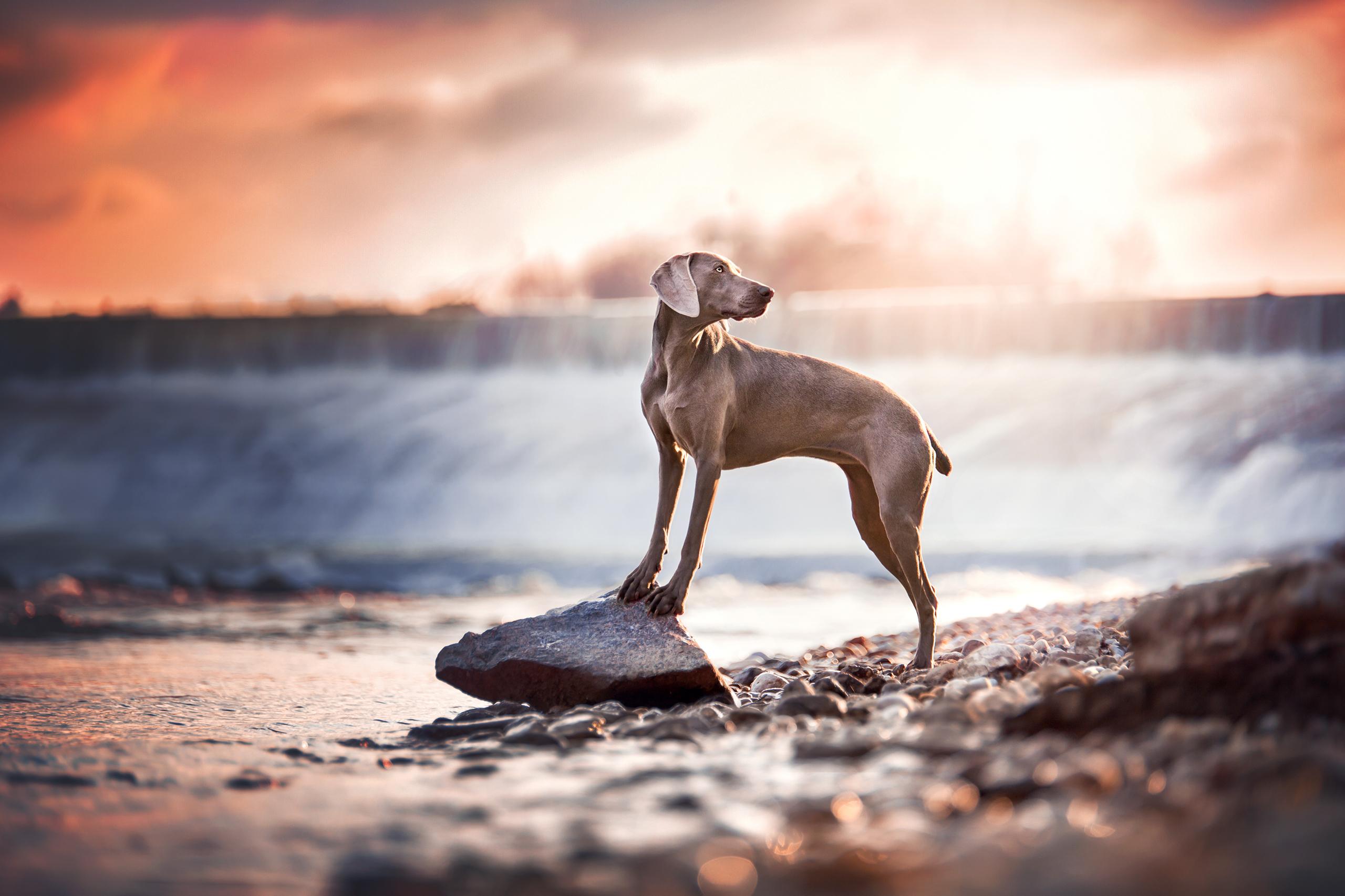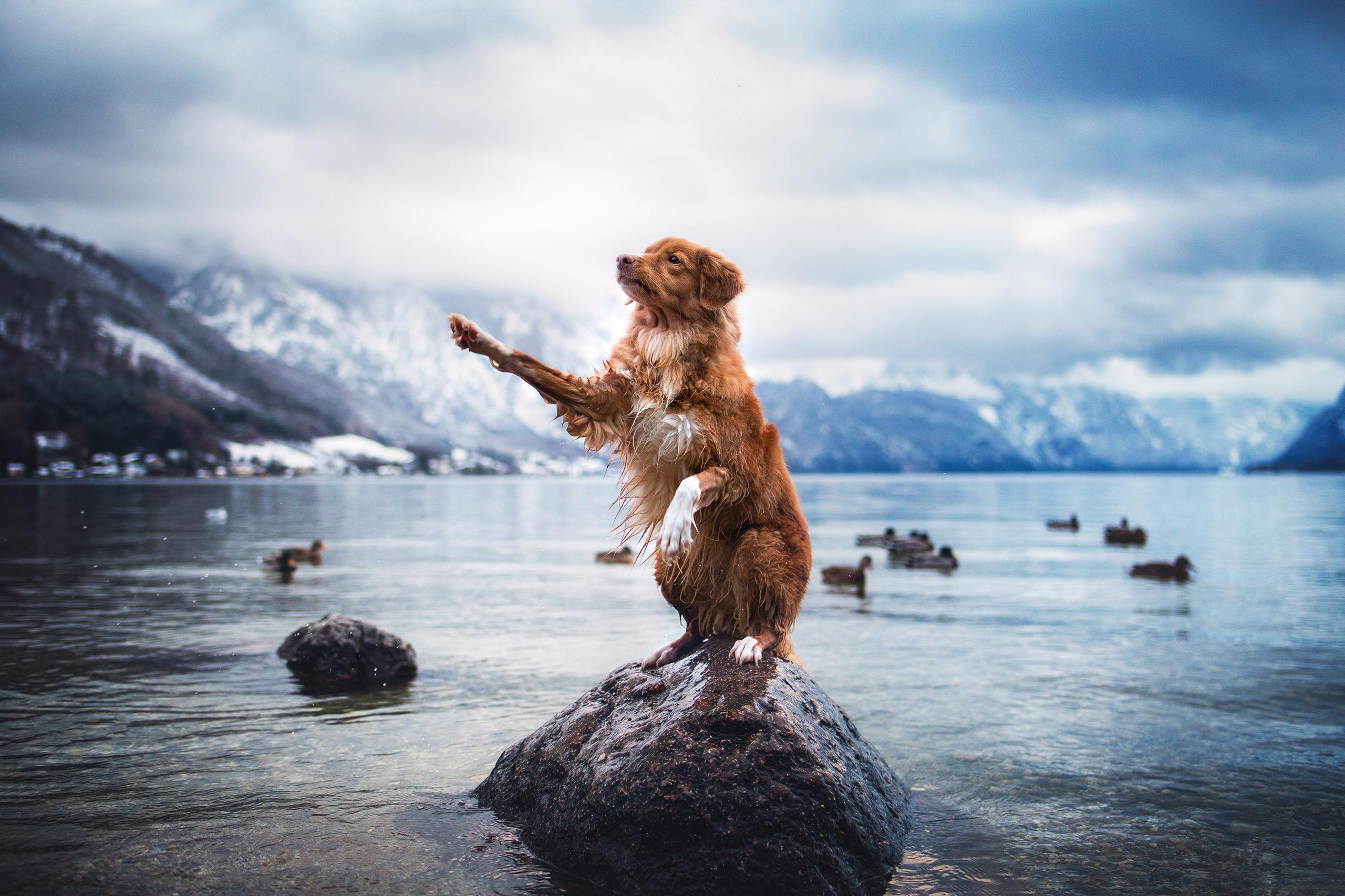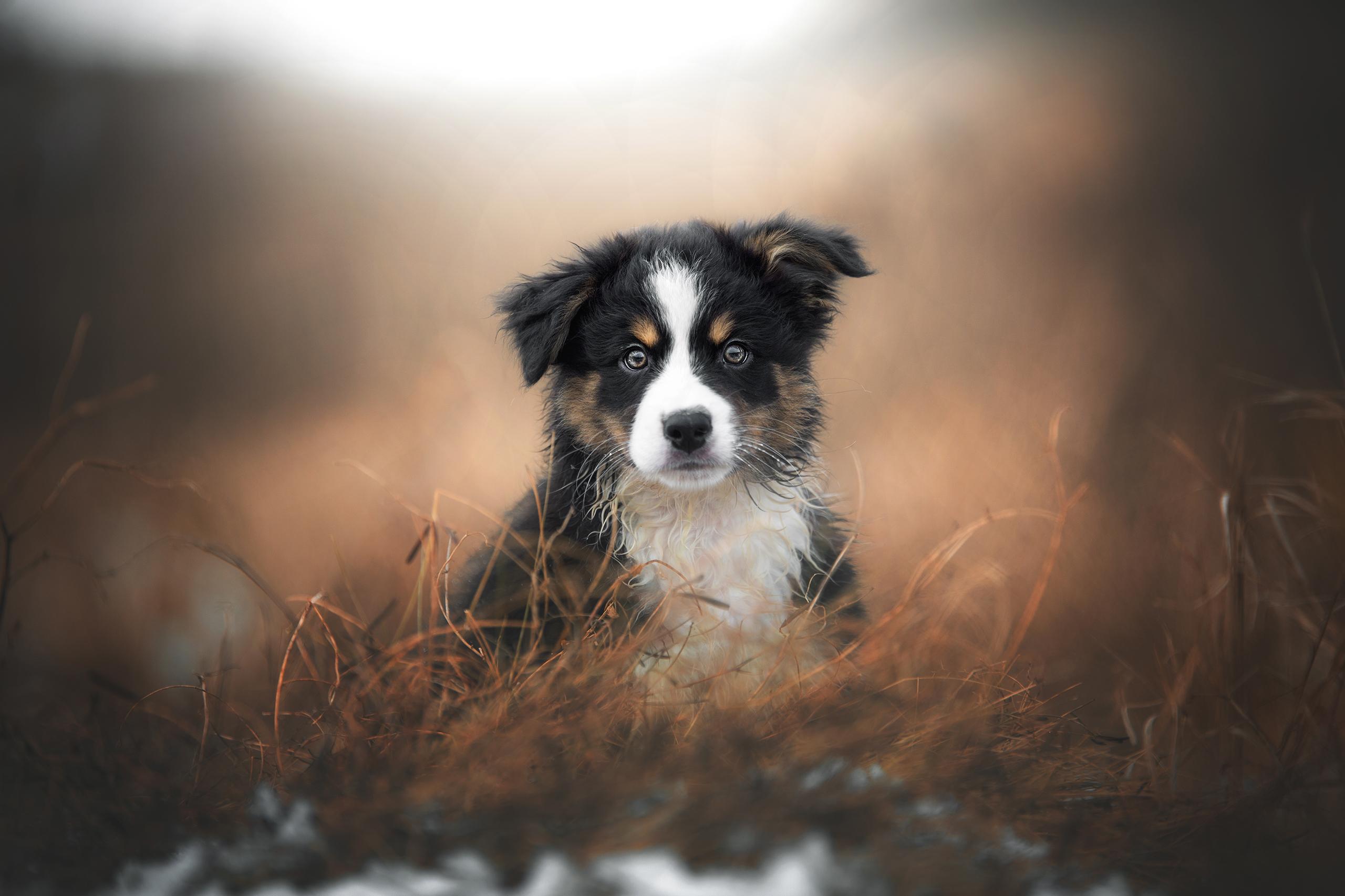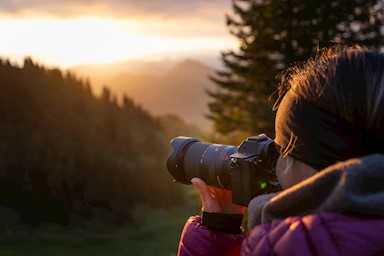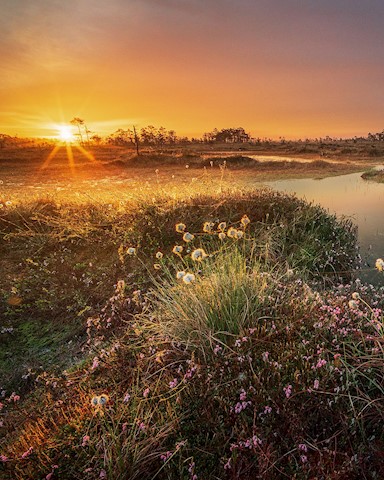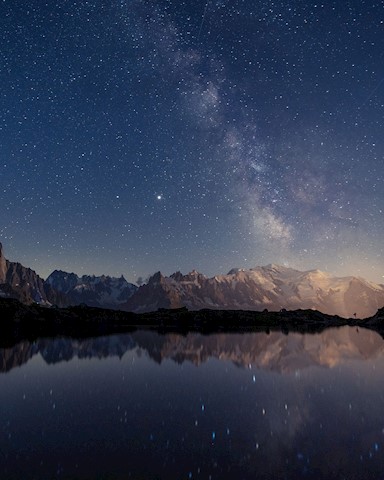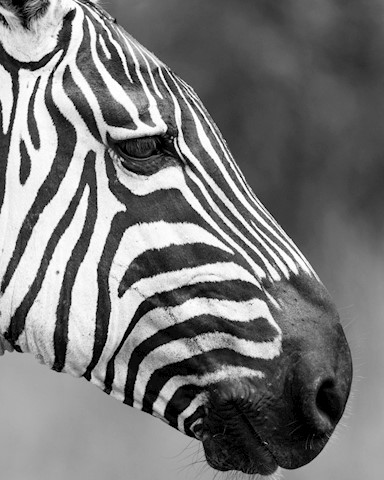Austrian photographer Jasmin Hummer loves animals and specially dogs. After a long time photographing only her Australian Shepherd, Nala and Nova Scotia Duck Tolling Retriever, Vani, she turned her hobby into a second job a few years back. Now she has more than 49,000 Instagram fans and coaches others in animal photography. Follow Jasmin on @jasminhummer and jasmin-hummer.at.
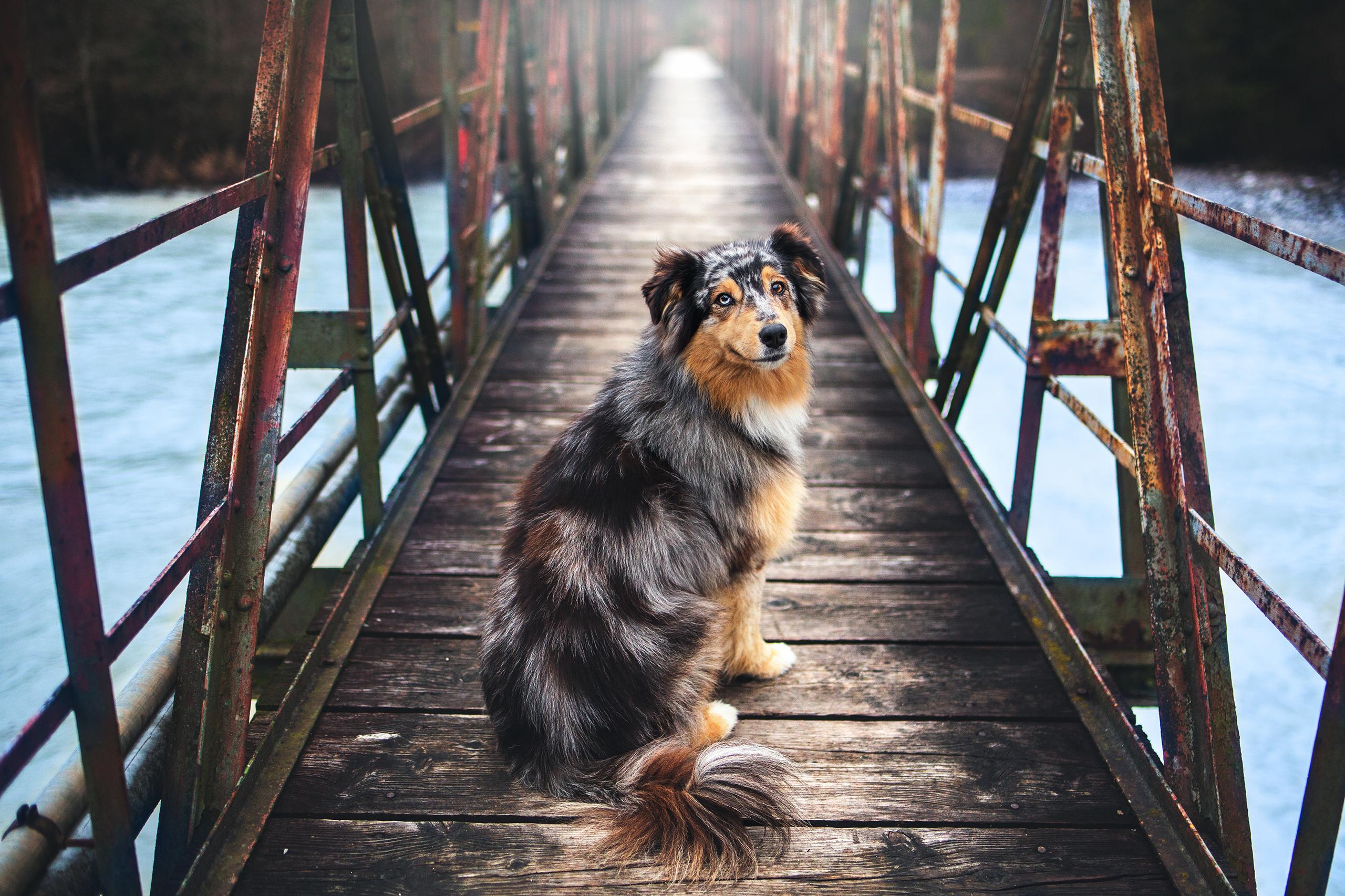
Step 1: Focal length and perspective
I work with all focal lengths. The Tamron SP 70-200 mm G2 is pretty much my standard lens. It is ideal for action and portrait shots. At 200 mm and F/2.8, it makes the subject pop out wonderfully. The SP 35 mm F/1.8 allows other, exciting perspectives, such as from slightly above (picture left). The wide angle of view is ideal to incorporate the landscape in the background into the composition in portraits. The short focal length means I can always be 'right up close' to the dog when I'm travelling. When I notice that the dog is relaxed, I change to a shorter focal length.
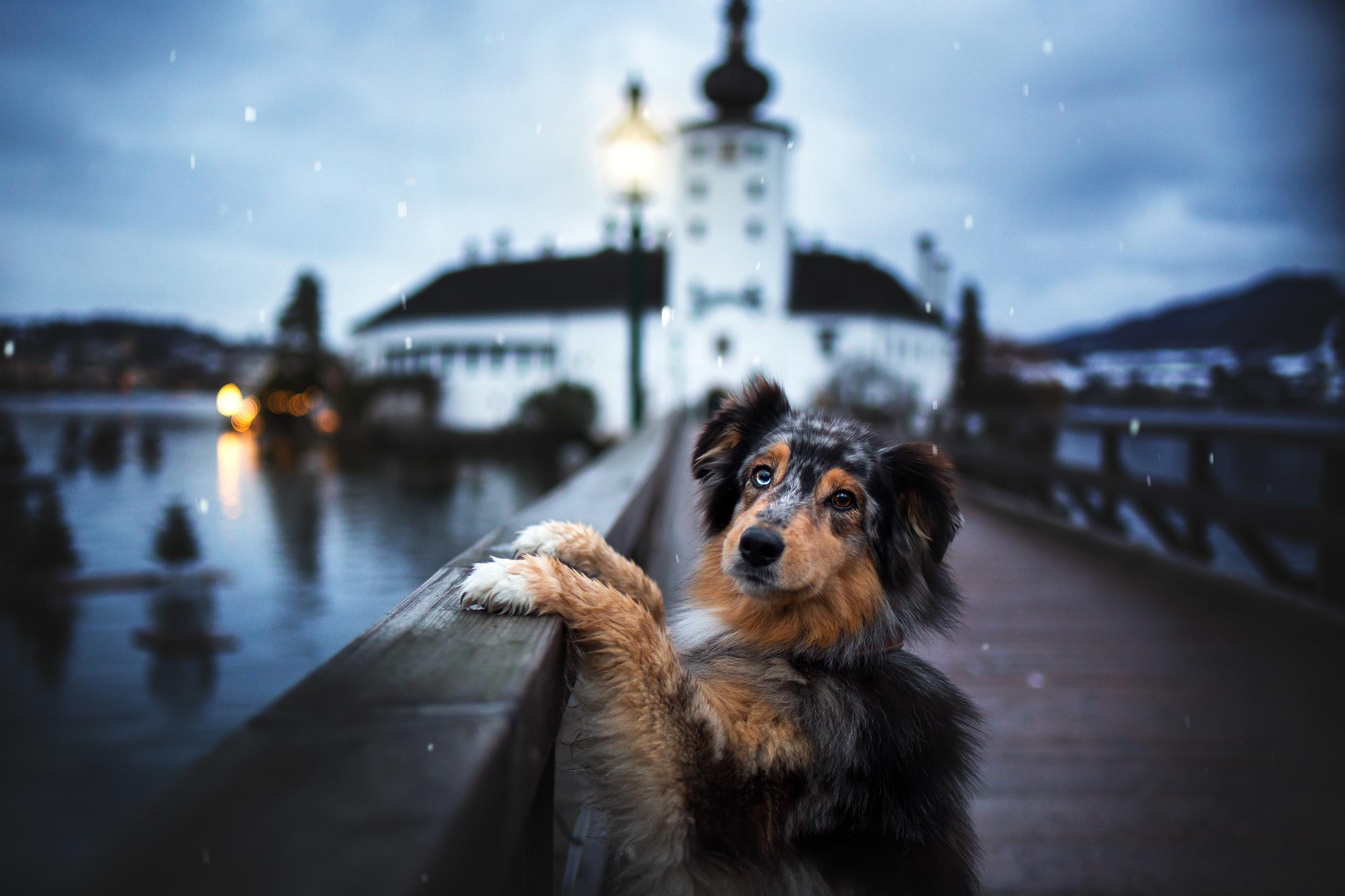
Step 2: Bring dynamics and movement into the picture
Dogs in action are always eye-catching because this is the best way to convey the nature of the animal – unfortunately, it is quite difficult for beginners to capture the quick movements accurately. However, there is a level of movement that sits between action shots at a full gallop and portrait shots. It is often the small movements that will captivate a viewer, a gently raised paw during a slow walk and a focused glance, a dog catching a treat or inviting you to play. These are all moments that come across naturally and have a gentle effect, but also convey lots of emotion.
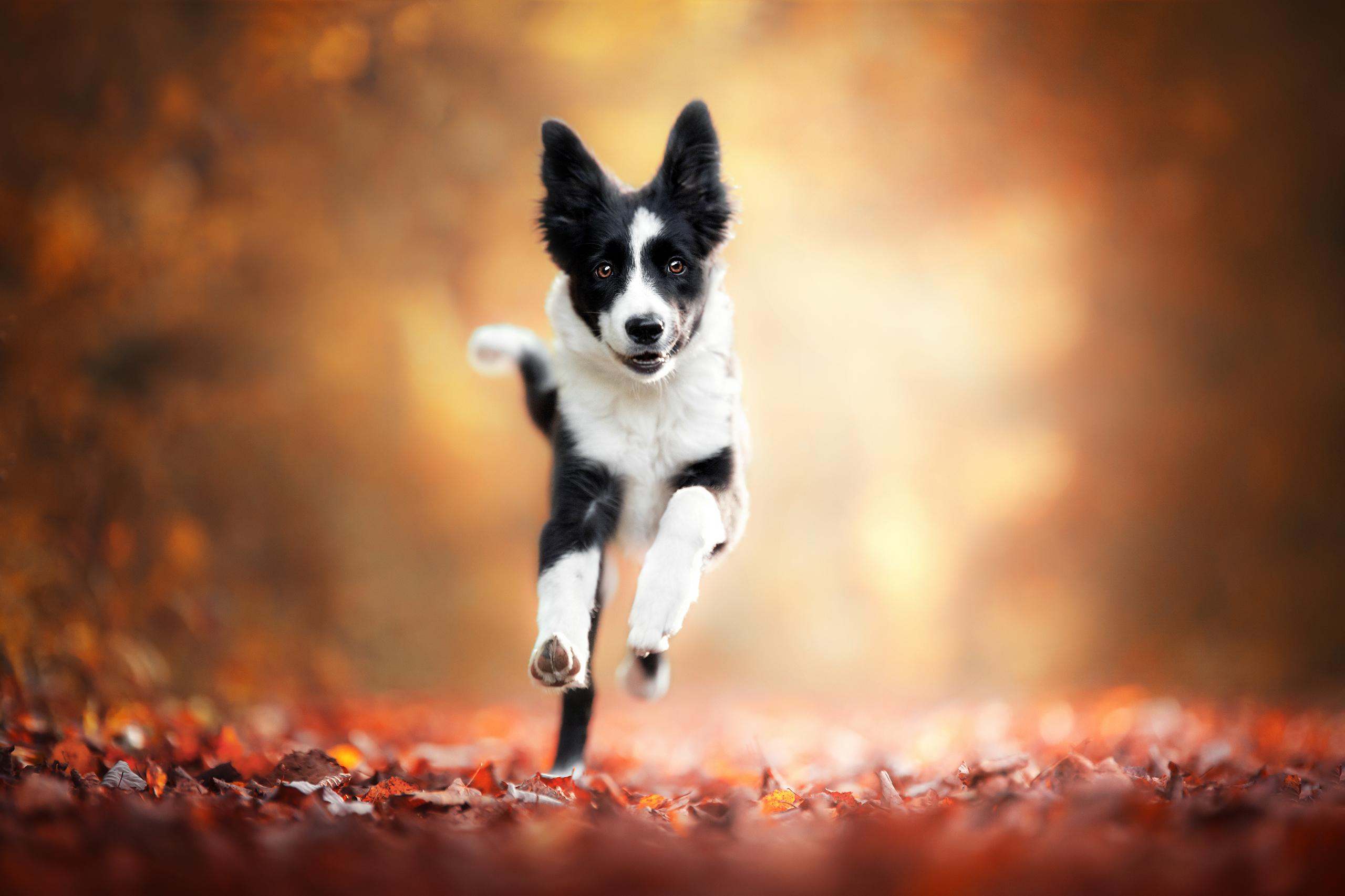
Step 3: Bring in excitement
If the dog understands commands like sit, lie down and stay, then you can photograph him from practically any position. However, it is important that he doesn't lose interest and start staring into space. Therefore: Bring in the excitement! And work very quickly!
I usually take a test picture without the dog and then position my four-legged friend very dynamically with lots of energy and physical play. For example, if I want the dog to look in a certain direction, I might throw a stone to capture the brief moment when his gaze follows the stone. I position the dog very dynamically with lots of energy. That keeps the shoot exciting for him and keeps him occupied.
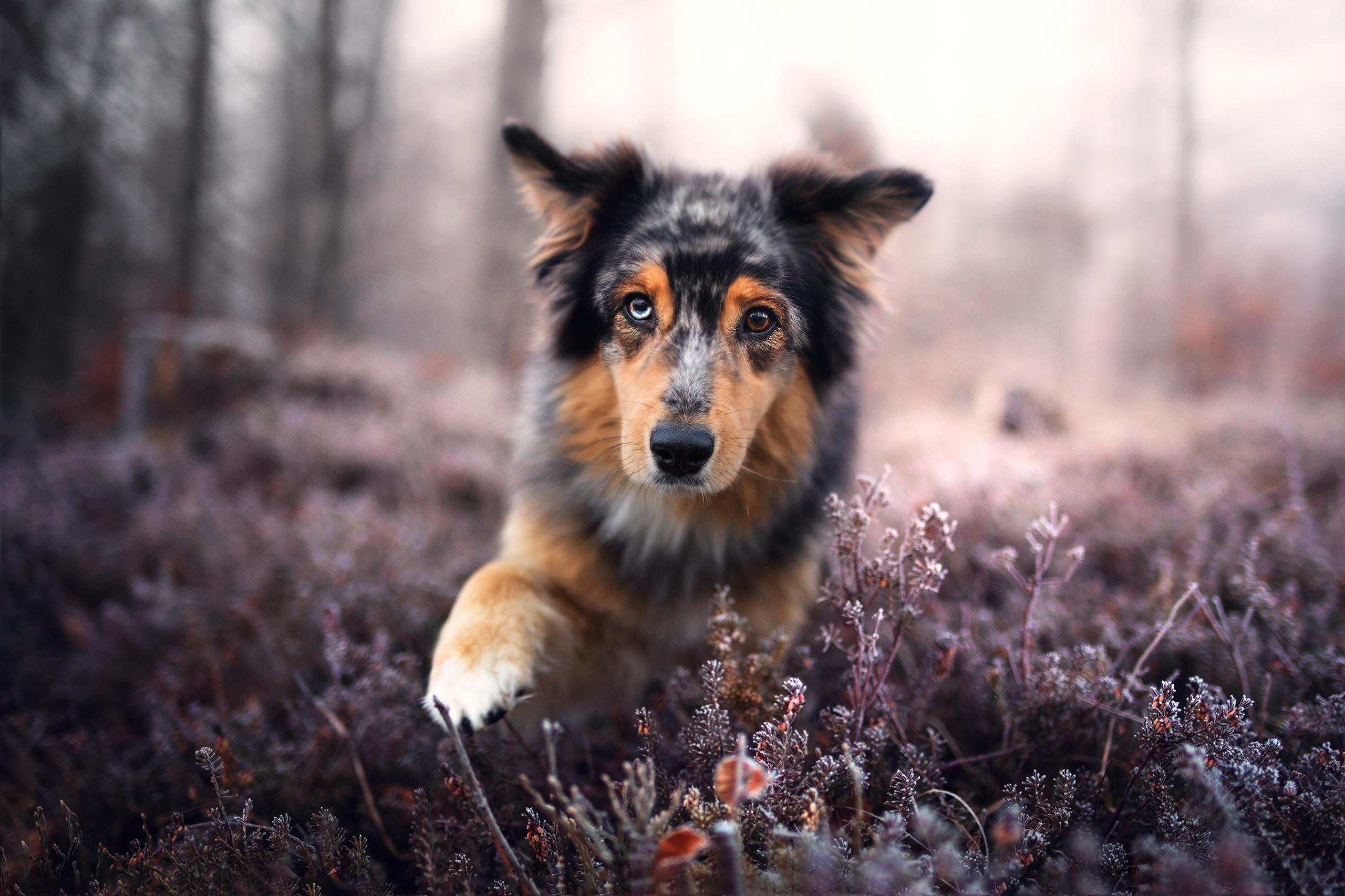
Step 4: Add variety with accessories
Because accessories can often look out of place in animal photos, I use them sparingly. For example, something that works well and doesn't look silly is blankets in winter. If the dog doesn't mind snuggling in, you can get really good shots this way – our four-legged friends look so cute under a blanket.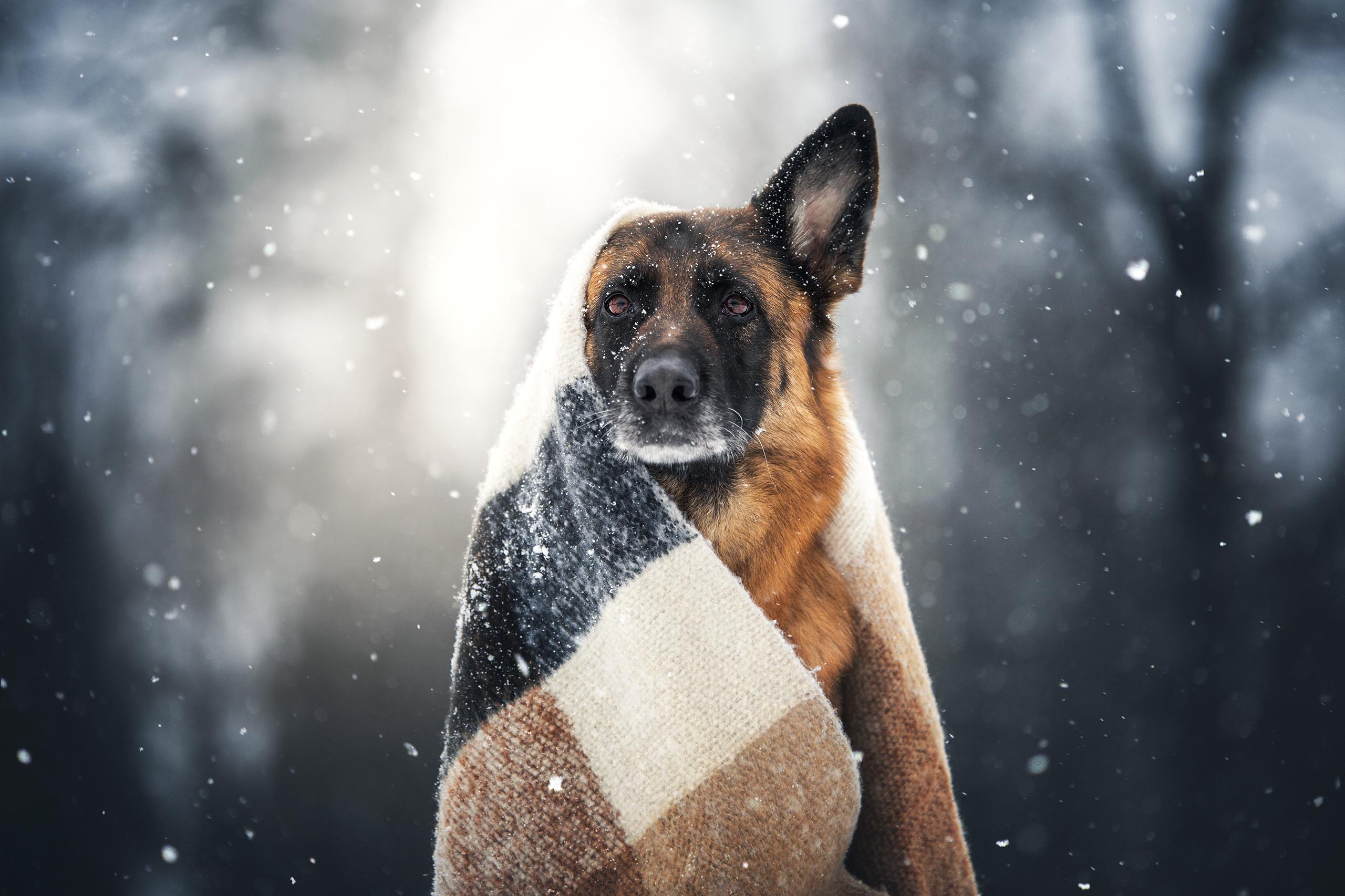
Step 5: Dog and landscape
Where would our dogs be without the woods, rivers and lakes? For me, there is nothing more beautiful than seeing the wild side of these wonderful creatures. Does your dog like to hold up her nose dreamily in the wind? Or does she tilt her head curiously when she hears a rustle in the forest? All these are moments I wish for as a photographer, because these pictures can tell so many stories. Photography for me is a combination of emotion and technique – one doesn't work without the other. Make sure to capture your dog against some beautiful scenery.
